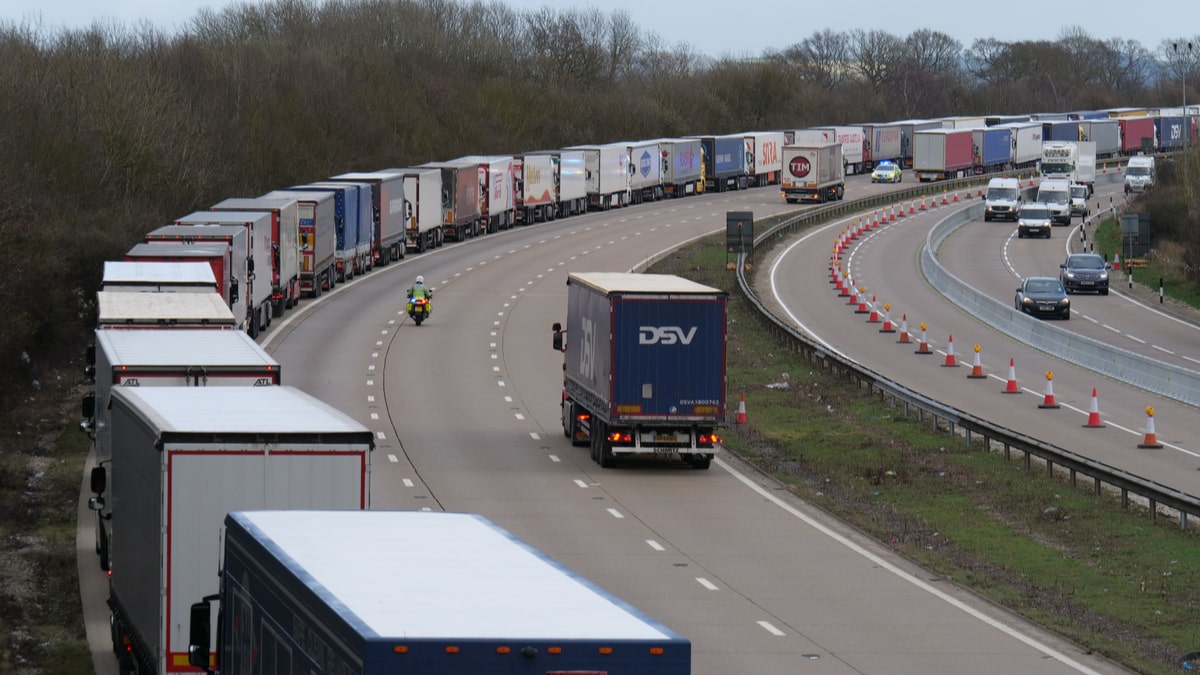
What do McDonald’s milkshakes, Haribo sweets and Nando’s peri-peri chicken have in common? Supplies have all been hit by a shortage of ingredients and heavy goods vehicle (HGV) drivers caused by the Covid crisis and worsened by Brexit.
Food and drink manufacturing is inherently focused on short order lead times and a lean stock management system. The retail and hospitality industry uses sales data to forecast future demand and only order what is expected to be needed. Stock is then delivered on a regular basis according to consumer buying patterns.
This just-in-time approach to food and drink supply chains can be highly efficient because it reduces food waste and associated costs. But at the same time, the smooth delivery of ingredients and products from Europe to the UK – or vice versa – depends on frictionless trade across the Channel. This, of course, hasn’t been possible since the UK left the EU.
Such is the problem, retailers have warned that supermarket shelves could be empty of fruit, vegetables and chicken this Christmas. The problem could last well into 2022.
“Over the past 30 years, supply chains have increasingly become just-in-time. The result is that we now have a chain of activities, each reliant on others, with limited resilience. This has become very visible recently through a series of independent failures,” says Emile Naus, partner at consulting firm BearingPoint and previously head of logistics strategy at Marks and Spencer.
Driver Shortage
The shortage of ingredients, products and HGV drivers has given the retail and hospitality industry food for thought. Should it rethink how supermarket shelves are stocked? And should eating establishments stock up on the ingredients and products that are more at risk of running out to avoid future disruptions?
The answer depends on perishability. Switching from a just-in-time supply chain wouldn’t be much of a problem for food and drink that has a long shelf-life and can be stored for months. But for perishable products that can’t sit in storage for long periods, a move away from a just-in-time supply chain wouldn’t make sense.
In a bid to reduce the HGV driver shortage and relieve the pressure on just-in-time supply chains, retailers and lorry firms have joined forces to call for temporary visas for drivers from the EU. The plea has been rejected by the government.
Analysis of the ONS Labour Force Survey for the second quarter for Logistics UK indicates that 14,000 EU HGV drivers left the UK in the year to June 2020 and only 600 returned in the following 12 months. As of the end of July, the UK’s HGV driver shortage stood at 100,000, according to the Road Haulage Association.
Rising Brexit-related costs and other complexities have driven up product prices and made stock management and forecasting extremely difficult for fulfilment providers like Fulfilmentcrowd.
“It has become more challenging to narrow down a small window of time to get goods in and then straight back out. This affects just-in-time for both UK imports and exports,” says Chris White, the company’s head of delivery.
Opportunities to improve
Food and drink aside, such problems are forcing other industries to address their reliance on just-in-time supply chains and instead consider keeping spare stock, as well as seeking alternative suppliers.
“It’s not easy to build up stock at a time of shortages, quite apart from the inventory costs involved. There is also a shortage of warehousing space. So many producers are being forced, in the short term, to carry on relying on prompt deliveries,” says Ana Nicholls, director of industry operations at the Economist Intelligence Unit.
Automakers and high-end fashion brands in particular “rely on long-term partnerships with suppliers that make products to their exact specifications, so switching is tricky”, she adds. The industries that will have the most success switching “will be those that are more reliant on generic, rather than bespoke, supplies”.
Although just-in-time strategies will remain challenging in the months ahead amid uncertainties around the post-Brexit UK-EU trade relationship, the concept of just-in-time isn’t dead yet, argues White.
“Supply chain technology is evolving at pace and supply chains are becoming increasingly integrated. This technology has the ability to quickly draw and analyse data to better understand uncertainty and create inventory models to keep moving goods efficiently and effectively,” he says.
Matthew Woodcock is a regional vice-president at procurement software provider Coupa, whose customers include Adidas and BMW. “The more forward thinking [companies] will use this opportunity to review the visibility of their supply chains and the exposure to key components,” he says.
Building visibility and awareness of supply chain risks allows for better inventory management. On the other hand, “stockpiles – if built in panic mode – can lead to increased costs and obsolescence risk”, Woodcock adds.
With no end in sight to the supply chain disruptions, “there is no easy, quick fix”, says Naus. “There are some sticking plaster options, such as increasing driver wages, but the real solution is to fundamentally rethink supply chain designs.”
